#CarbonCycle
Text
youtube
Just as highways experience traffic on land, the ocean experiences its own daily commute. 🚗
But instead of cars, this commute involves tiny aquatic plants—phytoplankton—that soak up carbon dioxide produced by burning fossil fuels, shielding us from the harmful impacts of climate change. And the data provided by Biogeochemical-Argo (BGC-Argo) floats gives us more insight into how this ocean “carbon superhighway” works.
The carbon superhighway, also known as the “biological pump”, is a process that transports carbon dioxide from the atmosphere down into the deep sea. Phytoplankton first take up carbon dioxide at the ocean’s surface into their bodies via photosynthesis and then are eaten by tiny animals called zooplankton. The dead bodies and waste products of phytoplankton and zooplankton, as well as fragments of other dead organisms, all sink through the water column. As the particles fall, they are eaten up in the deep ocean and transformed into carbon dioxide. That carbon dioxide gets trapped in the deep water layers, staying out of contact with the atmosphere for a few thousand years.
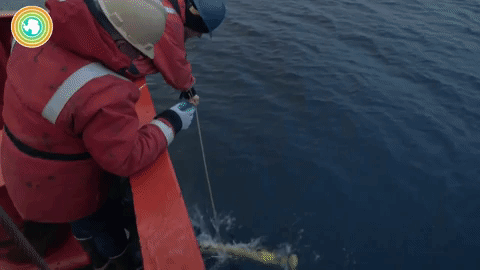
Understanding the carbon superhighway is important because the ocean is one of Earth’s biggest carbon dioxide storehouses, soaking up about 25 percent of the total human carbon emissions per year. This is due in no small part to the biological pump’s work in transporting atmospheric carbon dioxide to the deep ocean. However, as conditions in the ocean alter with climate change, responding shifts in plankton populations will influence just how effective the biological pump continues to be. The slower the carbon superhighway, the less carbon the ocean can store, and the faster our planet warms.
That’s why the real-time information collected by BGC-Argo floats is so important: by giving us a window into the carbon superhighway and other ocean processes, these floats are helping scientists to better understand and predict the impacts of climate change, to improve ocean health.
57 notes
·
View notes
Text

Are you curious about the importance of carbon dioxide in water? Look no further than the KWS5000 Carbon Dioxide in Water sensor from KC Sensor! This innovative device allows you to measure carbon dioxide levels in water with precision and ease. Carbon dioxide plays a critical role in many processes, including photosynthesis and the acidity of water. It's important to understand and monitor carbon dioxide levels in water to ensure that the ecosystem is healthy and functioning properly. With the KWS5000, you can accurately measure carbon dioxide in water to help maintain a balanced environment.
#CarbonDioxideInWater#WaterQuality#EnvironmentalMonitoring#CarbonCycle#AquaticEcosystems#ClimateChange#OceanAcidification
0 notes
Photo
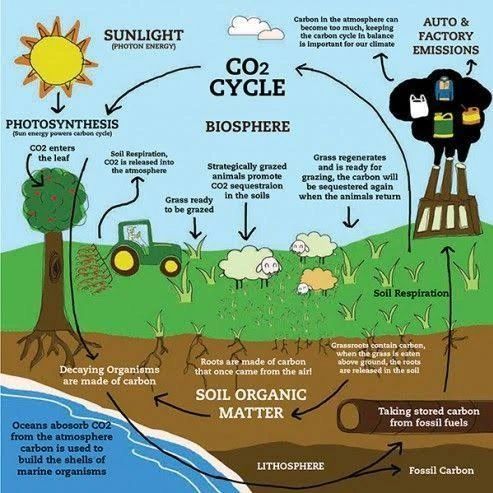
Can soil photosynthesis help us mitigate climate change? Climate change is one of the most pressing issues of our time, and we need to find innovative ways to mitigate its effects. One potential solution that is gaining traction is enhancing soil photosynthesis to convert atmospheric carbon into soil carbon. This process could help us sequester carbon in the ground, where it would be less likely to enter the atmosphere and contribute to climate change. Let's take a closer look at how this process works and why it could be an important tool in our fight against climate change. Soil photosynthesis is a process by which plants use sunlight to convert atmospheric carbon dioxide into carbohydrates that are then stored in the soil. This process can help to mitigate climate change in two ways. First, it sequesters carbon in the ground, where it is less likely to enter the atmosphere and contribute to greenhouse gas emissions. Second, enhanced soil photosynthesis could lead to increased plant growth, which would further sequester carbon and also result in more green space that can help cool the planet by reflect sunlight. There are a number of ways to enhance soil photosynthesis, including using biochar, increasing nitrogen levels in the soil, and using cover crops.Biochar is a type of charcoal that can be added to the soil to increase its ability to sequester carbon. Studies have shown that biochar can increase soil fertility and water-holding capacity while also reducing greenhouse gas emissions. Increasing nitrogen levels in the soil can also enhance photosynthesis by increasing the rate at which plants convert atmospheric carbon dioxide into carbohydrates. This can be done through a process called nitrogen fertilization, which involves adding nitrogen-rich materials like manure or compost to the soil. Finally, using cover crops can also help enhance photosynthesis by providing a living mulch that helps protect and nurture young plants. Cover crops can also increase water infiltration into the soil and reduce erosion. Conclusion: As we search for ways to mitigate climate change, enhancing soil photosynthesis could be a key piece of the puzzle. #carboncycle (at ecoplanetfarm) https://www.instagram.com/p/CkcSPOBJpZh/?igshid=NGJjMDIxMWI=
0 notes
Photo

#bikes #iceland #cycling #trekbikes #shutuplegs #roadbike #rapha #lifebehindbars #cyclecommunity #carbonbike #travel #trek #roadslikethese #raphacyclingclub #mamil #fitdad #cycle #carbon #mtblife #strava #roadcycling #rapha_rcc #lycra #cyclegram #carboncycle #beautyofcycling #mtbiceland #moto #husqvarna #wind https://www.instagram.com/p/CmFl3CoPpYV/?igshid=NGJjMDIxMWI=
#bikes#iceland#cycling#trekbikes#shutuplegs#roadbike#rapha#lifebehindbars#cyclecommunity#carbonbike#travel#trek#roadslikethese#raphacyclingclub#mamil#fitdad#cycle#carbon#mtblife#strava#roadcycling#rapha_rcc#lycra#cyclegram#carboncycle#beautyofcycling#mtbiceland#moto#husqvarna#wind
2 notes
·
View notes
Photo

In death we give back... carbon dating states that... #me #memyselfandi #edit #carbon #carboncycle #green https://www.instagram.com/p/B6zGobigHf0/?igshid=1ojgz17c0rxa1
1 note
·
View note
Photo

Some little ones from the last few weekends of camping. #camping #autumn #leaves #nature #fall #tinypainting #watercolor #fallleaves #impermenance #carboncycle #biodiversity https://www.instagram.com/p/B2fEcbVhiZq/?igshid=1aeza05rpsvvb
#camping#autumn#leaves#nature#fall#tinypainting#watercolor#fallleaves#impermenance#carboncycle#biodiversity
1 note
·
View note
Photo
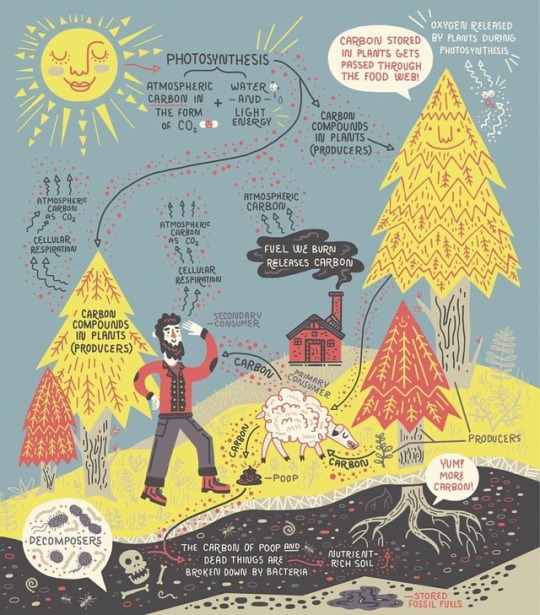
Understanding the carbon cycle is vital to stopping #climatechange. ☀️🌿🌑 . . . Illustration from my new book preorder link in bio ☝️and @planet_earth_book . . . #sciart #medicalart #bacteria #scientificillustration #globalwarming #carboncycle #scienceteacher #scienceart #ecology #ecoart #biodiversity
#climatechange#sciart#medicalart#bacteria#scientificillustration#globalwarming#carboncycle#scienceteacher#scienceart#ecology#ecoart#biodiversity
6 notes
·
View notes
Photo

Embracing #impermanance And firewood While @sciencestache and @annmariecroswell embrace chainsaws…not literaly embrace, because ouch, but poetically and spiritually 😂 . . . . . #backyardliving #trees #lifegoeson #carboncycle #biogeochemical #homesteadinglife #landscapemanagement https://www.instagram.com/p/CUDP0bVlNCk/?utm_medium=tumblr
#impermanance#backyardliving#trees#lifegoeson#carboncycle#biogeochemical#homesteadinglife#landscapemanagement
0 notes
Photo
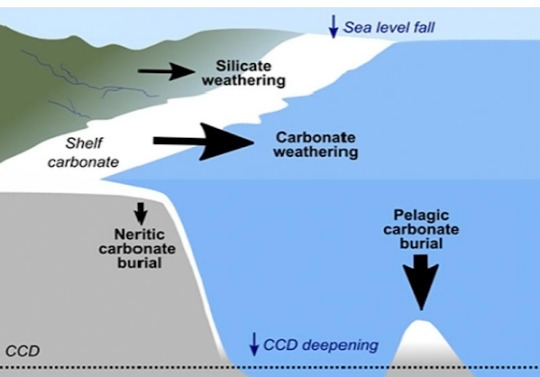
Changes in Ocean Chemistry Reveal How Sea Level Affects the Global Carbon Cycle
0 notes
Photo

Some big things are starting to happen over @pursuitcycles stay tuned. #carbonbikes #carboncycle
1 note
·
View note
Video
youtube
Robot on a mission 🤖
The sheer expanse of the deep sea and the technological challenges of working in an extreme environment make deep-water ecosystems difficult to study. By building on 25 years of engineering innovation, MBARI has developed a solution for long-term monitoring of the abyssal seafloor: Benthic Rover II. About the size of a small car, Benthic Rover II travels across the muddy seafloor taking photos and measuring how much oxygen bottom-dwelling animals and microbes are using over time. This autonomous robotic rover has been continuously operational at Station M, an MBARI research site located 225 kilometers (140 miles) off the coast of central California and 4,000 meters (13,100 feet) below the ocean’s surface.

A new study published in Science Robotics details the development and proven long-term operation of this rover. The information gathered by Benthic Rover II at Station M has helped scientists understand how carbon cycles from the surface to the seafloor—data fundamental to understanding the impacts of climate change on the ocean. Learn more on our website.
30 notes
·
View notes
Photo
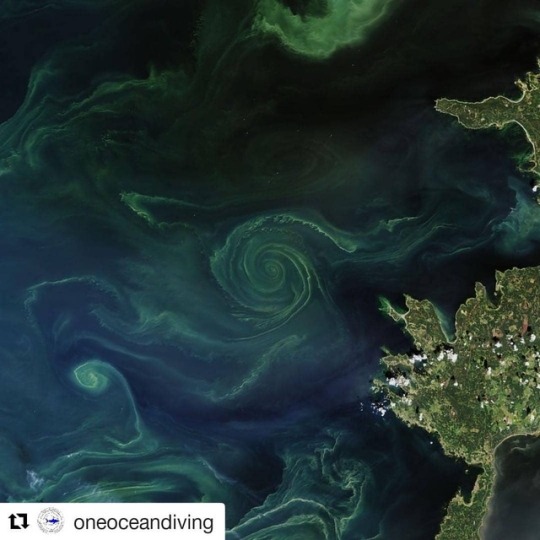
Very interesting... #Repost @oneoceandiving (@get_repost) ・・・ Sharks help us breathe. While rain forests are responsible for about 1/3 (28%) of the oxygen that we breathe, most of the Earth’s oxygen (70%) is produced by marine plants. Phytoplankton (microscopic marine plants that are so abundant they can be seem from space!) produce oxygen as a byproduct of photosynthesis. These algae form the base of the food chain for all of life in the ocean, which could make it the most important organism on earth. Polluted, warming waters (caused by runoff from land and C02 emissions) decrease phytoplankton production. However, historical overfishing causes far greater ecological consequences than any other human disturbance (Jackson et al. 2001). Meaning, the removal of top predators (such as sharks) can cause a phase-shift in the ocean’s ecosystem resulting in the disappearance of entire trophic levels (like the oxygen-producing phytoplankton). But hey, who needs to breathe anyway? #kindofabigdeal #itsallconnected #justbreathe #seafoodwatch #planetearth #oceanproduction #carboncycle #apexpredators #trophiclevels #bottomofthefoodchain #underappreciated #phytoplankton #algaearecool #savethereef #saveourseas #saveoursharks #oceanconservation #marinebiology ************************************** Post by intern @brittanyrvzoo Photo of phytoplankton bloom by @nasa https://www.instagram.com/p/Bw6Mj-2F8O4/?utm_source=ig_tumblr_share&igshid=bde1uhit9zzg
#repost#kindofabigdeal#itsallconnected#justbreathe#seafoodwatch#planetearth#oceanproduction#carboncycle#apexpredators#trophiclevels#bottomofthefoodchain#underappreciated#phytoplankton#algaearecool#savethereef#saveourseas#saveoursharks#oceanconservation#marinebiology
0 notes
Photo

Sharks help us breathe. While rain forests are responsible for about 1/3 (28%) of the oxygen that we breathe, most of the Earth’s oxygen (70%) is produced by marine plants. Phytoplankton (microscopic marine plants that are so abundant they can be seem from space!) produce oxygen as a byproduct of photosynthesis. These algae form the base of the food chain for all of life in the ocean, which could make it the most important organism on earth. Polluted, warming waters (caused by runoff from land and C02 emissions) decrease phytoplankton production. However, historical overfishing causes far greater ecological consequences than any other human disturbance (Jackson et al. 2001). Meaning, the removal of top predators (such as sharks) can cause a phase-shift in the ocean’s ecosystem resulting in the disappearance of entire trophic levels (like the oxygen-producing phytoplankton). But hey, who needs to breathe anyway? #kindofabigdeal #itsallconnected #justbreathe #seafoodwatch #planetearth #oceanproduction #carboncycle #apexpredators #trophiclevels #bottomofthefoodchain #underappreciated #phytoplankton #algaearecool #savethereef #saveourseas #saveoursharks #oceanconservation #marinebiology ************************************** Post by intern @brittanyrvzoo Photo of phytoplankton bloom by @nasa (at Haleiwa, Hawaii) https://www.instagram.com/p/Bw5UcM2BKNI/?utm_source=ig_tumblr_share&igshid=1xc2t07bc1r9f
#kindofabigdeal#itsallconnected#justbreathe#seafoodwatch#planetearth#oceanproduction#carboncycle#apexpredators#trophiclevels#bottomofthefoodchain#underappreciated#phytoplankton#algaearecool#savethereef#saveourseas#saveoursharks#oceanconservation#marinebiology
0 notes
Video
Tweets from #badlandsnationalpark that #donaldtrump deleted. @theyoungturks #nodapl #nokxl #climate #carboncycle
7 notes
·
View notes
Photo



58 notes
·
View notes
